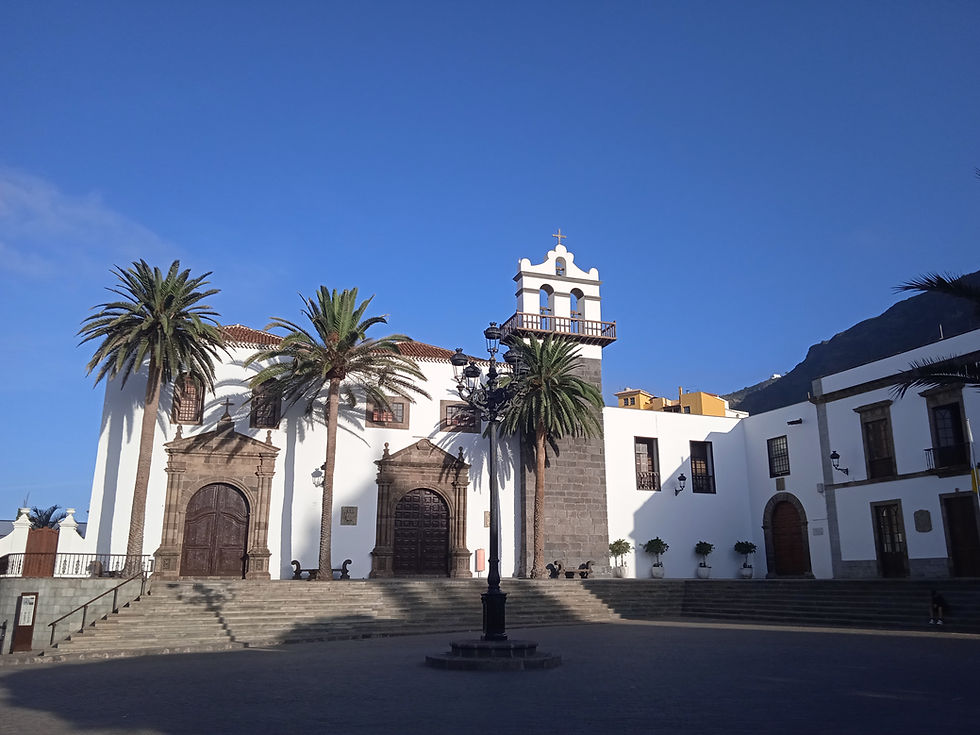Puerto de la Cruz and La Orotava:two pearls from the north of Tenerife
- Cécile Barrès
- Jul 15
- 2 min read
Updated: Jul 17


About 30 minutes from the Jardin al Mar, La Orotava and its neighbor Puerto de la Cruz, located in the fertile valley of La Orotava, have a shared past linked to conquest, agriculture (sugar cane then vine) and maritime trade.
From the 16th century, La Orotava became an important economic center, while Puerto de la Cruz developed as an export port. Today, they retain a rich heritage and an authentic atmosphere, away from the mass tourism of the south of the island.

La Orotava: colonial elegance and living traditions
Perched on the hills of the Orotava Valley, La Orotava enchants visitors with its beautifully preserved historic centre, recognized as a cultural heritage site. The town features elegant mansions, flower-filled patios, cobbled streets, and ornate wooden balconies.
Top sights include:
The Casa de los Balcones, a fine example of Canarian wooden architecture, now home to a craft centre and small museum.
The Victoria Gardens, a series of terraced gardens with marble staircases and fountains offering sea views.
The Church of La Concepción, a baroque gem from the colonial era.
Every June, La Orotava hosts the famous Alfombra de Flores for Corpus Christi, where the streets are decorated with stunning carpets made of flowers, volcanic sand, and natural pigments — a unique and colorful celebration of tradition.


Puerto de la Cruz: where history, art, and the ocean meet

Puerto de la Cruz is a popular seaside resort that has preserved its historical charm and a welcoming, relaxed atmosphere. Highlights include the Botanical Garden (founded in 1788), the old town with its cobbled streets and colonial houses, and the Lago Martiánez, a complex of seawater pools designed by César Manrique, a visionary artist known for integrating architecture with nature.

The Castillo San Felipe, a 17th-century fortress, now serves as a cultural venue for exhibitions and concerts.
Nature lovers will also enjoy Martiánez Beach and the stunning Playa del Bollullo, one of the island’s most beautiful wild beaches, accessible by a walking path through banana plantations.


Comments